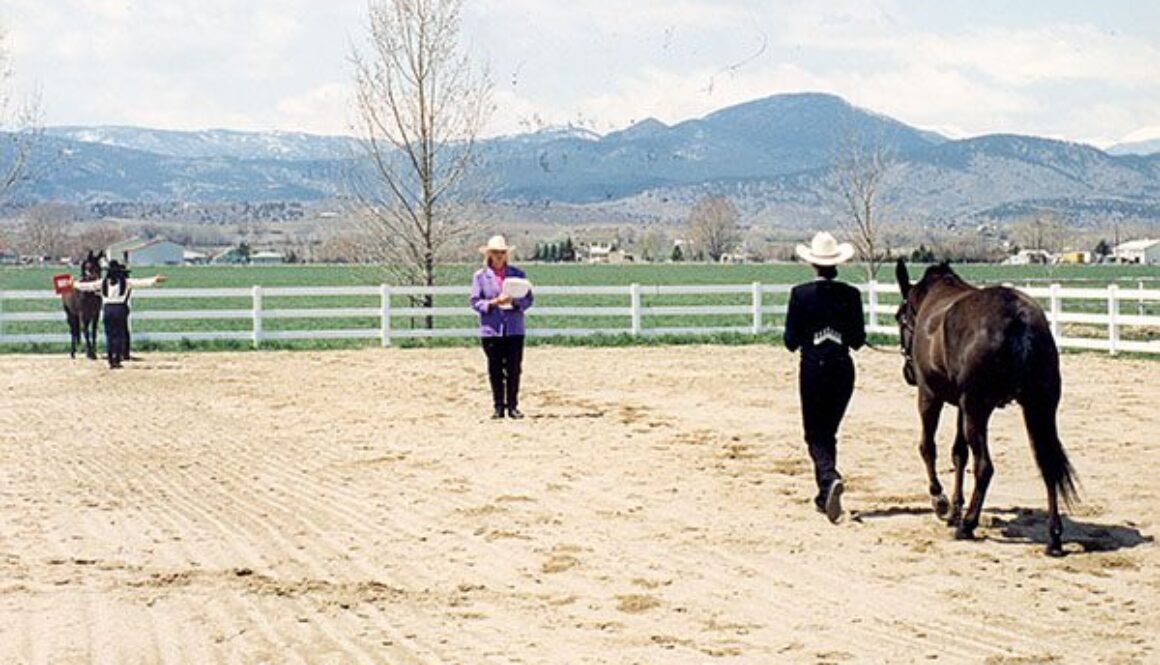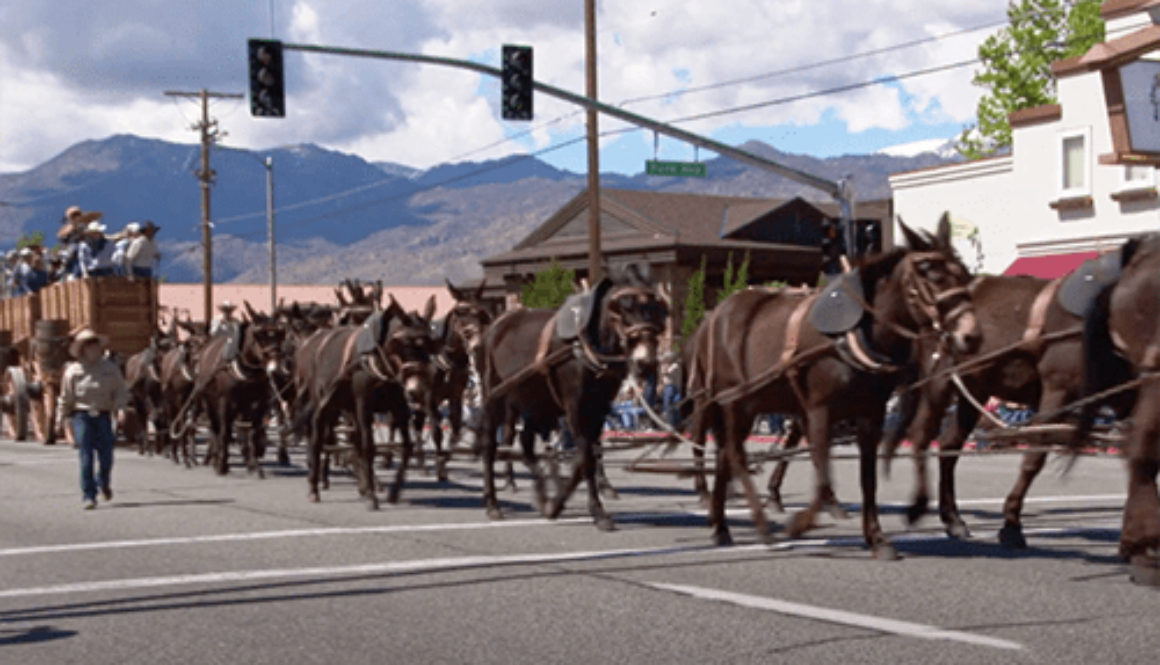LTR Training Tip #41: Turn on the Forehand
Meredith demonstrates how to teach your equine to execute a turn-on-the-forehand on the lead line.

Meredith demonstrates how to teach your equine to execute a turn-on-the-forehand on the lead line.

The turn on the haunches can be a complicated move for your equine. Learn how to approach the move in this Training Tip.

If you are going to attend a show, it is advisable to get a copy of the rulebook that is designated by the show committee, so you know what to expect for each class you enter.

One of the most difficult things your equine will ever learn is to stand perfectly still while the show judge inspects him.

The following is from the American Wild Horse Campaign:
Did you know the price of a single mare’s annual PZP vaccine is just $30?
We’re asking: today — on May 30th, will you make a $30 gift to fund our PZP program and help us manage wild horse populations using tried and true fertility control measures?
| DONATE $30 NOW |
We’re fighting back against the Bureau of Land Management’s (BLM) massive herd removals in court and on Capitol Hill — and the success of our PZP program in Nevada has been critical in our fight to protect wild horses.
In roughly a month, the Bureau of Land Management (BLM) is scheduled to resume helicopter roundups. And over the next 5 years, the BLM is planning to round up an estimated 90,000 wild horses and burros!
| DONATE $30 NOW |
Tens of thousands of wild horses and burros will lose their families and freedom because of these roundups, and because the BLM doesn’t have the capacity to store all of the horses they capture, it’s already leading to slaughter for too many of these cherished animals.
| $30.00 >> HELPS 1 HORSE |
| $60.00 >> HELPS 2 HORSES |
| $150.00 >> HELPS 5 HORSES |
| $300.00 >> HELPS 10 HORSES |
| DONATE OTHER >> |


One of the most difficult things your equine will ever learn is to stand perfectly still while the show judge inspects him.




Grooming is an important facet of your equine’s management. How you take care of his hair coat will greatly affect his health. How often you groom and what tools you use can positively affect your equine’s behavior and comfort.


The elbow pull will stop your equine from raising his head to the point where he hollows his neck and back, and will keep him in reasonably correct posture.





Training sessions that are too repetitious and last too long will only fatigue and frustrate your equine, resulting in unwanted resistance. Keep lessons short and easy for the best training results.
The following is from the American Wild Horse Campaign:
Here is your latest news on all things wild horses and burros!
Action: Forest Service to Cull Small Arizona Herd
The Heber wild horses of the Sitgreaves National Forest in eastern Arizona have been through enough. Since 2018, the bodies of 28 horses from this small herd have been found shot to death in the Forest and not a single person has been brought to justice.
Now, the Forest Service has just released a Territory Management Plan that continues this assault — in a different way. The agency wants to reduce the population of these mustangs to as few as 50 animals on nearly 20,000-acres of public land.
Why? You might ask — well, taking a look at who else resides in the Forest might be a good place to find answers. At the same time that the Forest Service wants to drastically reduce the population of the herds, it permits nearly 500 cow/calf pairs to graze within the horses’ habitat.
We cannot let this stand. Please take one moment to speak up for Arizona’s Heber wild horses.
| TAKE ACTION |
The wild horses in the Onaqui Herd Management Area (HMA) of Dugway, Utah are arguably the most visited and cherished mustang population in the country. The herd’s accessibility provides a unique experience for visitors and photographers who, in turn, share their photographs and stories of these iconic animals with an international audience. Not only that, but there is a successful PZP program, spearheaded by volunteers, to stabilize the population numbers.
But none of that seems to matter to the BLM, which recently announced that it will be targeting hundreds of the Onaqui wild horses for removal as early as July 2021. When we heard the news, we sprung into action and are currently developing a plan to fight back. We will give you more details on that soon, but for now, please read our most recent oped in the Salt Lake Tribune about this situation.
| READ THE LATEST |
The BLM released an Environmental Assessment this week outlining a plan to continue its nearly decade-long assault on the iconic wild horses of the Wyoming Checkerboard. Under the proposal, the BLM would use helicopters to permanently remove 3,500 wild horses — or nearly 40% of the wild horse population in the state.
The BLM continues to cater to the interests of the Rock Springs Grazing Association (RSGA), whose members view wild horses as competition for cheap, taxpayer-subsidized livestock grazing on public lands. Since 2011, AWHC has been involved in litigation against the RSGA and the BLM to defend the wild horses in this area and has amassed numerous court victories, including at the Tenth Circuit Court of Appeals. We intend to continue legal action to defend Wyoming wild horses and to rally public opposition to this plan — but more on that soon.
Check out our latest news release on the situation and stay tuned for more ways to take action in the coming weeks.
| READ THE LATEST |
—The AWHC Team


For your equines to perform their best, they need to have even weight distribution and efficiently utilize balanced movement in their bodies. Learn how to encourage good posture for good performance.


Equines are not born with an awareness of their own bodies, or proprioception, so they must be taught how to orient themselves.


These groundwork exercises will give your donkey a foundation of strength and confidence he needs to perform well and be light in the bridle when you finally ride or drive.


There are many advantages to having an equine that can square up at the halt, because that means he is putting equal weight over all four feet for ideal balance and good posture.


Learn how to properly use the “face tie” restraint for your mule or donkey. This is a humane alternative to twitches, stocks and hobbles. This tie should NEVER be used with horses.


If you need some extra leverage with your equine during initial leading training, try using the “Quick Twist.” Meredith explains how to set it up, and when to use it in this Training Tip.
The following is from the American Wild Horse Campaign:
BREAKING: Wild Horse champions in Congress are speaking up and we urgently need you to join them!
The Bureau of Land Management (BLM) is pushing full steam ahead — for the fifth time — with a cruel, dangerous and invasive plan to surgically sterilize wild horses. They propose using a risky and outdated procedure the National Academy of Sciences called “inadvisable for field application” and veterinarians call “barbaric.” But here’s the good news: 58 wild horse champions in Congress are fighting back and so can you.
This week, these 58 Congress members, led by Senator Cory Booker (D-NJ) and Representative Dina Titus (D-NV), submitted a bipartisan letter to Interior Secretary David Bernhardt opposing this terrible plan.


The surgical sterilization procedure at issue is known as “ovariectomy via colpotomy.” It involves a veterinarian manually reaching into a mare’s abdominal cavity via the vaginal canal, then blindly locating the ovaries, severing them with a rod and chain device known as an ecraseur, and pulling them out. When infrequently performed In domestic mares, the procedure requires extensive pain relief and aftercare that simply cannot be provided to wild, untamed horses.
Because it is so risky, the National Academy of Sciences advised that the procedure is “inadvisable for field application” due to the possibility of bleeding and infection. But the BLM intends to gallop ahead with the inhumane surgery anyway.
With our coalition partners, we’ve filed multiple lawsuits and secured a federal injunction that previously stopped the BLM from surgically sterilizing wild mares in Oregon, and we’re ready to stop this cruelty again.
This support from Congress comes on the heels of the historic House amendment to direct $11 million of the BLM’s Wild Horse and Burro Program budget to implement humane PZP fertility control as an alternative to traumatic roundups and surgical sterilization. We are building momentum toward real change!
Thank YOU for helping to keep that momentum going!
Thank you,
American Wild Horse Campaign